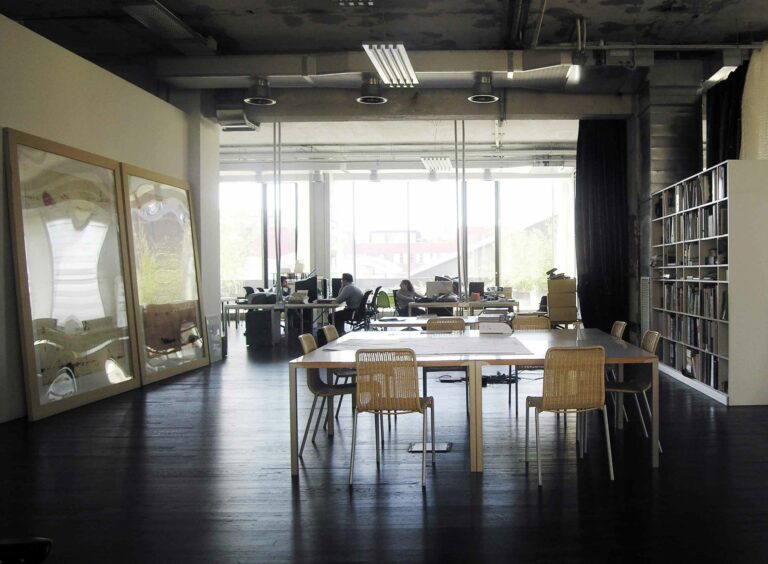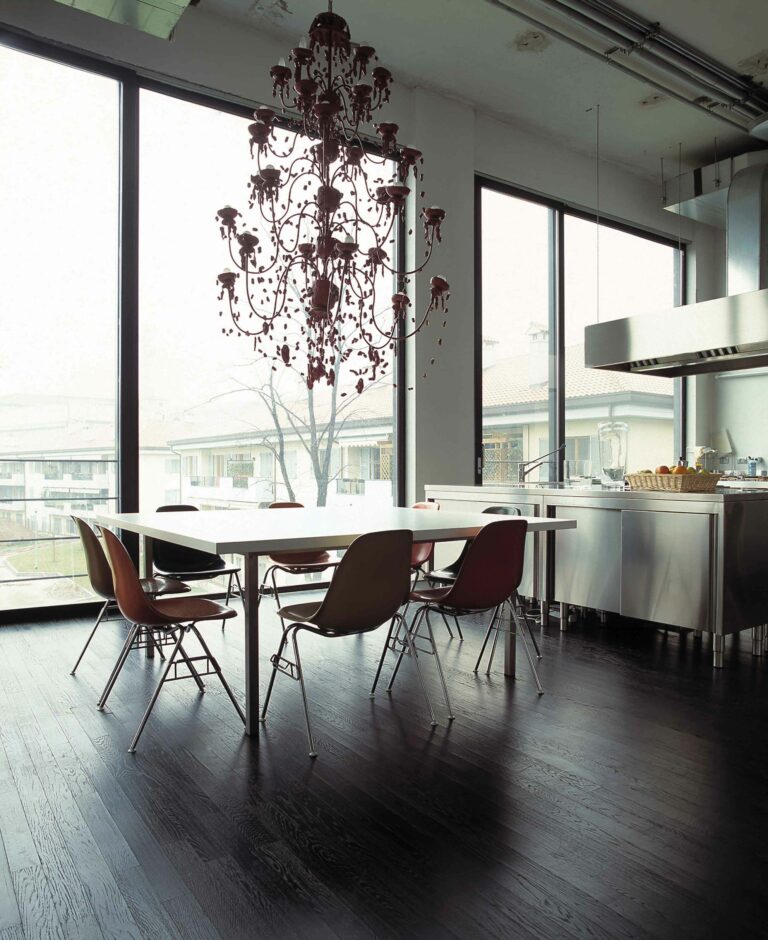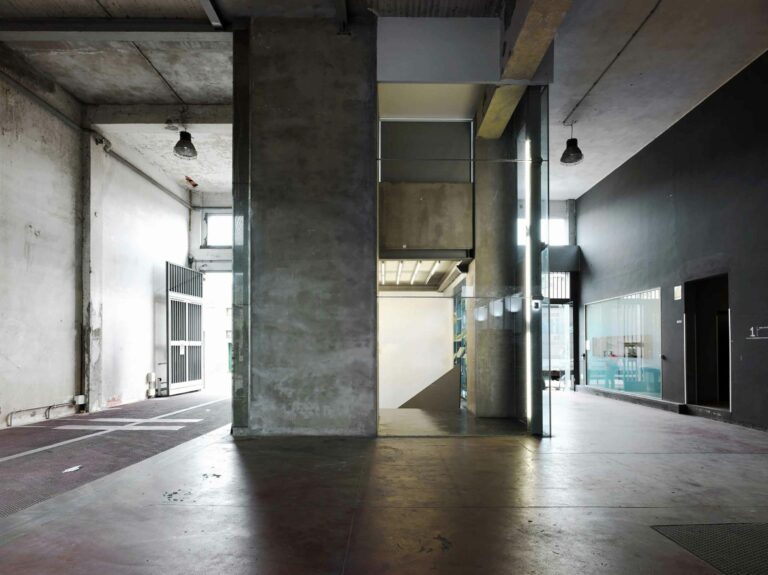Via Ventura is an important creative reconversion project involving the historic former Faema factory which made espresso coffee machines, in Milano.
Started at the end of the millennium by Mariano Pichler and designed by Pierluigi Mutti's studio, it was one of the first examples in Italy of large-scale post-industrial retrofitting.
- Client
- Via Ventura
- Year
- 2000
- Status
- Completed
- Size
- 7000 sqm
- Team
-
project Flavio Albanese —Franco Albanese

Flavio Albanese
founder & partnerFlavio Albanese (1951), is founder and president of ASA studio albanese. He is a self-educated designer, by combining his passion for contemporary art with the practical experience of an artisan-architect. Having come into contact with Carlo Scarpa, he learns from him to avoid an “a priori” approach to design, adapting on a case-by-case basis to the occasions, themes and contexts. He has held courses at the École Polytechinique Fédérale in Lausanne and at the Art Institute in Chicago (1980), at Yale University (1983), at the University of Architecture in Delft (2005), at the University of Florida (2006), at the Fundacion Proa de Buenos Aires (2008) and frequently at the most important Italian universities. He has also held two workshops at the international summer school of the Architecture School in Venice in 2009 and 2010. He was a member of the Confindustria Vicenza committee from 1998 to 2001, the Domus Academy Scientific Committee (2004-2005) and the MIart Committee of Honour (2009 and 2010), director of the Officina del Porto di Palermo (2006-2008), vice president of the Andrea Palladio Architecture Firms International Centre (2011-2015) and president of the Fondazione Teatro Comunale Città di Vicenza (2010-2016). From 2007 to 2010 he was asked to head Domus, the prestigious international architecture, design and contemporary art magazine. Active since 1971, in 1987 he founds with his brother Franco ASA studio albanese. The studio's projects were published by the most most important architecture and design magazines: the Neores project was selected for the Mies van der Rohe Foundation European Union Prize for Contemporary Architecture (2003), and ASA studio albanese took part in Venice's Architecture Biennial in 2004 and 2006. Flavio is an avid reader and bibliophile (his library, which is open to the rest of the firm, contains more than 15.000 volumes) and he is a connoisseur and collector of contemporary art.
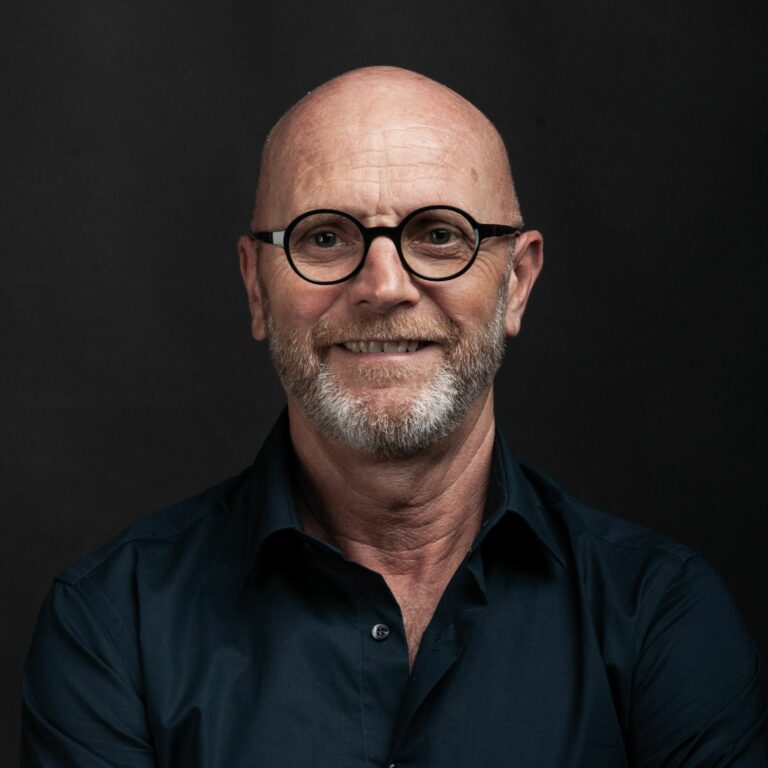
Franco Albanese
partner, CEO & executive directorFranco Albanese (Vicenza, 1958) has worked in the world of architecture and design since 1976. He graduated from the Architecture School in Venice in 1986 and the year after he founded ASA studio albanese in Vicenza with his brother Flavio. Since then he has been the firm's CEO and Technical Manager, and this role has led him to playing his part in the creation, development and execution of the most important projects. As designer and operations manager he oversaw: the Faculty of Veterinary Medicine at the University of Padua (1997); “Neores”, the production site and headquarters of Sinv Spa in Schio, Vicenza, (selected for the Mies van der Rohe Foundation European Union Prize for Contemporary Architecture in 2003); the project for the Town Hall of the Municipality of Grumolo delle Abbadesse, Vicenza (1999); “Morimondo 17”, the industrial reconversion of the Sinv spa premises in Milan (2000); the headquarters of Margraf in Chiampo, in the province of Vicenza (2006). He also supervised the “Rocco Forte Verdura Resort” in Sciacca, in Sicily (2005), the expansion of Pantelleria Airport (2006), the new Rinascente in Palermo (2007), the reconversion project of Lindower 22 in Berlin (2011), the Hybrid Tower project in Mestre-Venice (2012), the Fope headquarter extension project in Vicenza (2016). In recent years, he has increasingly concentrated on reconverting urban industrial areas, which has become a key theme of ASA studio albanese's philosophy. In recent years, he has increasingly concentrated on reconverting urban industrial areas, which has become a key theme of ASA studio albanese's philosophy.
project manager Andrea Marlia
Andrea Marlia
team Simone Cordara —Nicola De Ponti —
Simone Cordara
Federico Pellizzari —
Nicola De Ponti
Giulio Pugno Vanoni
Federico Pellizzari

Giulio Pugno Vanoni
- Partners
- Mutti & Architetti Sr
- Images credits
- Andrea Garzotto, Gaia Giacomelli, Pietro Pisoni, ASA studio albanese
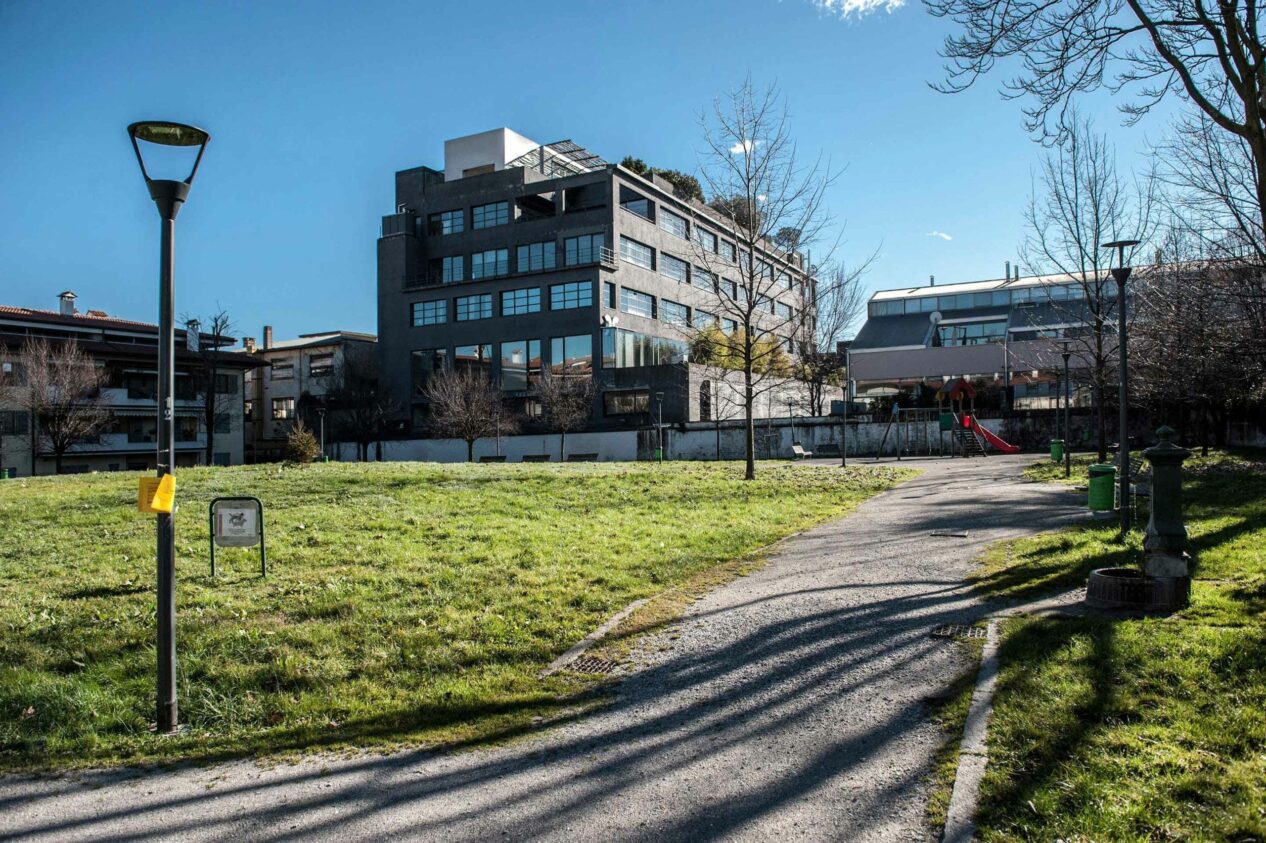
In the wake of this initial restoration, the whole urban area of Lambrate underwent rapid transformation, become one of the most interesting and important creative districts of the city in the space of just a few years. With the hybridisation of many businesses, showrooms, art galleries and performance spaces, lofts and offices, the industrial buildings in Via Ventura have resulted in a renowned and oft-quoted case history. Asa Studio Albanese contributed to the project by refitting several sections of number 15, using low-definition recovery procedures with the aim of leaving the traces of the industrial past as intact as possible. The merit of these strategies, designed to re-adapt dormant buildings, is that they draw on a huge catalogue of architectural options, providing great flexibility in terms of both time and space, with different areas transformed to different degrees. The areas designed by the studio involve the basement, the ground floor and the first floor of number 15, a multi-storey building that was originally Faema’s laboratory, canteen, and research and administrative offices. The large ground floor that looks onto Via Ventura was restored by closing it off towards the garden with an experimental huge “sheet” of perforated steel sheet, covered in thick semi-transparent silicone, with a sheet hanging from the ceiling with an eight-metre drop that seamlessly creates a translucent, impartial, slightly defamiliarising wall. Silicone is an element which, besides providing perfect thermal and acoustic insulation between the interior and the exterior, also muffles noises made inside this large space, which is to be used for various kinds of events, from concerts to temporary exhibitions and trade fairs. An impartial area that experiments with the potential of empty space without a specific identity. The large open-space first floor is an area devoted to studio’s architectural research, but can be reconverted in various ways for various purposes. The treatment of the existing structures and the use of materials immediately reveal the intention to recoup the historic marks and industrial identity.
The uninterrupted windows on the main front, the terrace-garden, the vegetable garden and the greenhouse with butterflies are foreign elements that transform the closed space of the factory into an open and bright setting.
The studio space has always been used in a very informal way, as something more fluid than a mere workplace: impromptu dinners in the industrial kitchen, parties, meetings, exhibitions, concerts and performances have all made the large open space a bona fide laboratory of creativity, culture and connections.
The residence-studio on the ground floor and in the mezzanine communicate with a defamiliarising, very long, double-height interstitial space, taken from the unused gap between the neighbouring public park and the multi-storey building. A space with a half-height gallery running across its entire length and covered by a wholly glazed structure that illuminates it from above: the ideal space for large works of art and installations.
Finally, the underground showroom of a contemporary rug manufacturer is connected with the ground floor via an Escher-like stairwell and is divided into a series of sparse white rooms where the carpets live and float like works of art in an exhibition.







